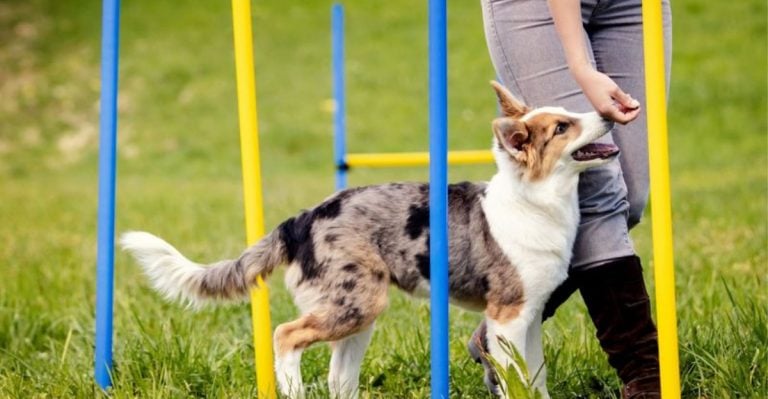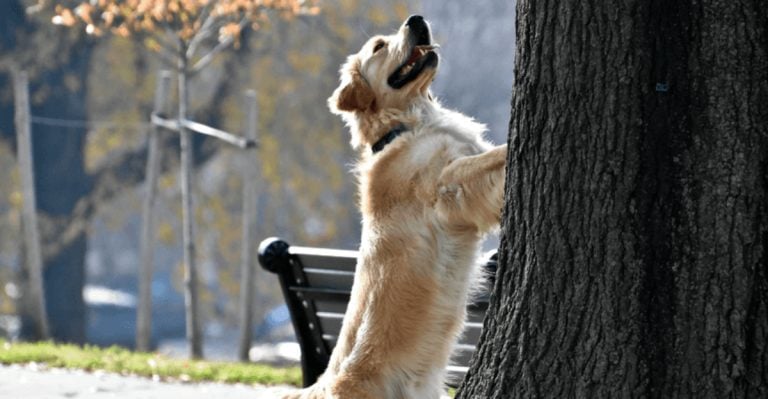15 Times Your Dog Appears To Be Misbehaving Explained

Dogs aren’t trying to be the boss of the house, but they have their way of getting messages across. Many behaviors we once labeled as “dominant” are just your pup’s way of saying, “I need something” or “I’m not cool with that.” These actions offer insight into how your dog relates to you and the world around them.
Ignores Basic Commands

Turning away from cues like “come” or “stay” can be your dog’s way of indicating confusion or distraction. Instead of reading it as defiance, consider it feedback on your training process. Repetition with rewards works far better than frustration or pressure.
Blocks Your Path

A dog that pauses in doorways or stands in narrow halls isn’t asserting control. Often, it’s about curiosity or the comfort of your presence. They might be trying to get your attention or signal interest in what’s about to happen—maybe a walk or a treat.
Pushes Ahead On Walks

Leading on the leash usually reflects enthusiasm, not hierarchy. Dogs naturally move faster than humans and are eager to explore. They’re not looking to take charge—they’re just excited to sniff and explore. Teaching loose-leash walking helps manage this behavior and makes outings more enjoyable for both of you.
Gets Between You And Others

Squeezing between you and a visitor or nudging another pet might look possessive, but it’s usually a request for reassurance or affection. They’re expressing social preferences, not staking a claim. If you give them calm attention without reinforcing pushy actions, it can ease their desire to take charge in busy moments.
Guards Resources From You

It’s instinct, not control, that drives dogs to hover over toys or food. This is known as resource guarding, and it’s a survival-based response. You can build trust through trading games and positive associations to teach your dog that it doesn’t need to protect its stuff from you or others.
Demands Attention On Their Terms

Some dogs nudge, bark, or stare until you pet them, then walk away once they’ve had enough. Such interactions reflect their desire to manage stimulation on their terms. It’s communication, not manipulation. Recognizing these cues can help you create better emotional balance during bonding moments.
Sleeps In Your Spot

When you see them settling into your seat or bed while you’re gone, it shows a need for comfort, not challenge. Your scent lingers in those spots, making them feel safe and secure. If it becomes disruptive, offering an equally cozy alternative and reinforcing it gently can create a better rest routine.
Crowds Your Space

When your dog leans on you or plops down chest-to-chest, it’s not testing boundaries—it’s seeking closeness and comfort. Physical proximity is often a way to feel secure. If the pressure becomes too much, guiding it away with gentleness keeps the clarity of the message with kindness.
Reacts Strongly To Corrections

When corrected, a stiff posture or intense stare isn’t necessarily defiance. It could stem from stress or confusion, possibly linked to a fear of punishment. Dogs read body language more than tone, so harsh reactions can shut them down. Calm instructions and clear expectations make learning feel safer and more consistent.
Reacts When You Touch Their Belongings

Tensing up when you approach their toys or bowl signals a comfort zone being crossed. They may be worried about losing something important. You can teach them commands like “drop it” or “leave it” using rewards, which builds cooperation and trust around high-value items.
Controls The Start And End Of Play

Do they drop a toy at your feet and walk off mid-game? It is about engagement on their timeline. Their focus can change quickly, and when they stop halfway, it usually means they’re either content or feeling overstimulated. Let them convey the pace so you can prevent frustration or miscommunication during play.
Mounts People Or Pets

Mounting behavior isn’t always about mating or dominance. It often appears when excitement or stress takes over, and sometimes when the dog is overstimulated. Redirecting energy through play and other calming activities can reduce this behavior over time, especially in busy social settings.
Sets The Routine

Various instances where they are standing near the leash or whine before mealtime aren’t a power play—it’s routine awareness. Canines are excellent timekeepers, and they anticipate patterns based on previous reinforcement. If they seem impatient, they may need clarity or a consistent schedule that helps them feel secure.
Refuses To Be Moved

If they refuse to budge from the couch or block a hallway, it could mean they’re relaxed and want to stay put. Instead of a control tactic, it’s a moment of comfort. Try luring them away with a cue or treat to avoid confrontation and keep communication respectful.
Holds Direct Eye Contact

Though a steady gaze may feel intense, it typically signals curiosity or concern for dogs, not a challenge. In many cases, dogs are waiting for your next move or trying to read your emotions. Soft eye contact paired with a relaxed tone helps reinforce trust to build your connection.






